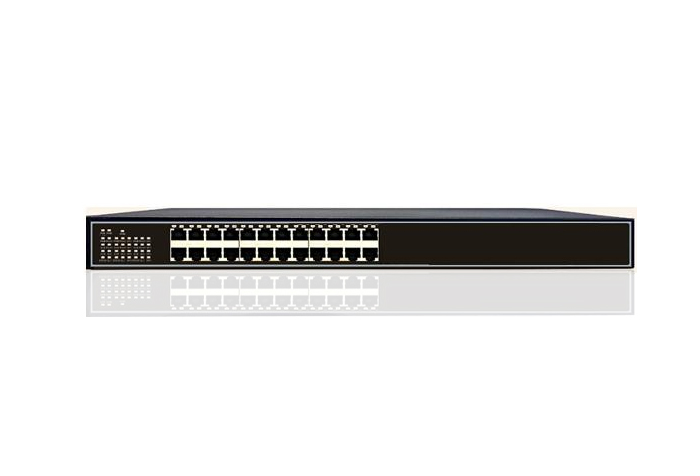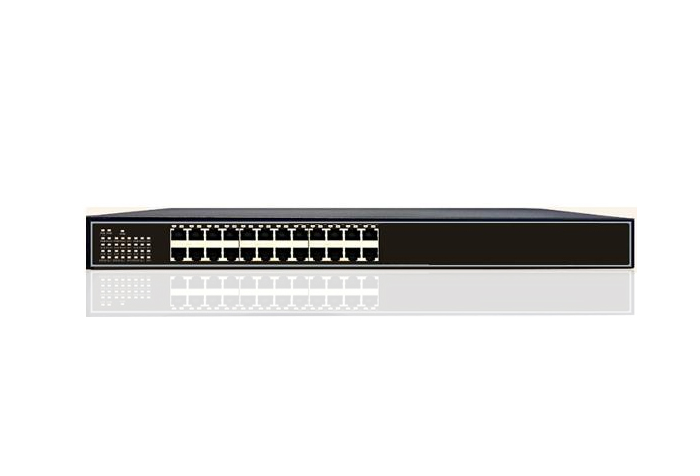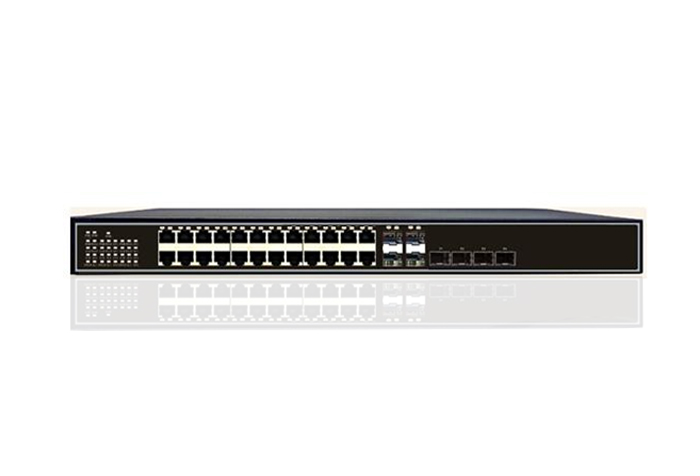Model: AT-GS5000
|
Product name |
AT-GS5000-16T |
AT-GS5000-24T |
AT-GS5000-24TC |
|
Ports |
16 10/100/1000M Base-T |
24 10/100/1000M Base-T |
16 10/100/1000M Base-T+8 1000M Base COMBO |
|
Backplane capacity |
32Gbps |
48Gbps |
48Gbps |
|
Forwarding capacity |
23.9Mpps |
35.7Mpps |
35.7Mpps |
|
Dimensions (width x depth x height)) |
440mmx44mmx220mm |
|
Power supply |
90-264VAC,50-60HZ |
|
Power consumpt |
Full-loaded≤20W |
|
Environmental norms
|
Operating Temperature: 0 ° - 50 ° C (32 ° - 104 ° F) Storage Temperature: -20 ° - 70 ° C (-4 ° - 158 ° F) Operating Humidity: Maximum relative humidity 90% without condensation Storage humidity: 95% maximum relative humidity, non-condensing Working height: up to 10,000 feet (3,000 meters) storage altitude: the largest 10,000 feet (3,000 meters) |
|
Weight (Full-loaded) |
<2.5KG |
Business Features:
|
Network protocols and standards |
IEEE802.3 、 IEEE 802.3ab 、 IEEE 802.3x 、 IEEE802.1q 、 IEEE802.1p 、 IEEE802.1z 、 IEEE802.1d 、 IEEE802.1s 、 IEEE802.1w 、 IEEE802.1ax 、 IEEE802.1ak |
|
L2 Switching |
• Supports: – Learning up to 8K MAC addresses depending on device – Static entries – MAC limiting per port/LAG/VLAN • Line rate switching for all packet sizes • Shared and Independent VLAN learning • VLAN flooding for broadcast and DLF packets • Hardware-based address learning • Six CPU-Managed Learning (CML) modes per port • Hardware-and software-based aging • Software insertion/deletion/lookups of the L2 table • Same port bridging supported |
|
L2 Multicast |
• Supports 256 L2 multicast groups • Line-rate switching for all packet sizes and conditions • Three port filtering modes to control multicast packet behavior |
|
VLAN |
• Supports: - 4K VLANs - Protocol-based VLANs - Port-based VLANS - IEEE 802.1p - IEEE 802.1Q - Independent VLAN learning (IVL) - Ingress filtering for IEEE 802.1Q VLAN security • VLAN-based packet filtering |
|
Source Port |
• Egress port block masks |
|
Filtering |
• Trunk group blocking masks |
|
Storm Control |
• Per-port: - Unknown unicast packet rate control - Broadcast packet rate control - Multicast packet rate control |
|
Spanning Tree |
• Supports: - IEEE 802.1D spanning tree protocol (single spanning tree per port) - IEEE 802.1s for multiple spanning trees - IEEE 802.1w rapid spanning tree protocol—delete and/or replace per: • Port • VLAN • Spanning tree protocol packets detected and sent to the CPU |
|
Double-Tagging |
• Supports: - Unqualified learning/forwarding - Q-in-Q |
|
Mirroring |
• Ingress/egress mirroring support • Mirror-to-port receives the unmodified packet for ingress mirroring. • Mirror-to-port receives the modified packet for egress mirroring. |
|
QoS Features |
• Supports: - Eight CoS queues per port - Per-port, per CoS drop profiles • Port level shaping • Q level shaping • Traffic shaping available on CPU queues • Programmable priority to CoS queue mapping • Provides two levels of drop precedence per queue • Strict Priority (SP), Weighted Round Robin (WRR), and Deficit Round Robin (DRR) mechanisms for shaped queue selection |
|
Port Security |
• Per port blocking • Supports IEEE 802.1x • MAC address blocking |
|
DoS Prevention |
• Denial of Service detection/prevention |
|
Management Information Base |
• SMON MIB, IETF RFC 2613 • RMON statistics group, IETF RFC 2819 • SNMP interface group, IETF RFC 1213, 2836 • Ethernet-like MIB, IETF RFC 1643 • Ethernet MIB, IEEE 802.3u • Bridge MIB, IETF RFC 1493 |
|
Energy Efficient Ethernet™ (EEE) |
• System power saving by informing external PHY into Low Power Idle (LPI) state. • EEE is only supported on 1 GbE ports, not on the uplink/stacking ports. |


